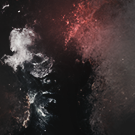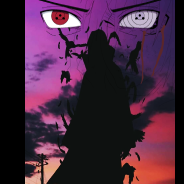Game Informations :
Developer: Heidi Kemps
Platforms: Pc
Initial release date: May 16, 2017 at 8:00AM PDT
Fire Emblem is a series with a storied history and has transformed dramatically over its nearly 25-year existence. Fire Emblem Echoes, a remake of a very early game in the series--Fire Emblem Gaiden--remains a departure of sorts from what most veteran players might expect. Rather than emphasizing character relationships and story dialogue, Fire Emblem Echoes puts its focus on long- and short-term strategy and strength-building. The end result is a fresh take on Fire Emblem's strategy-RPG formula, and one that ranks among the best of the 3DS library.
Echoes follows the dual leads of Alm and Celica, a pair of youths that bear a strange crest upon their hands. They bond together as children in a tiny farming village, only to be torn apart by a sudden dramatic event. Many years after the fact, you're in control of both characters--and their respective armies--in search of a reunion amongst a conflict-ridden yarn spun of large-scale wars, hidden pasts, and shocking truths.
While the story is classic Fire Emblem fare, the emphasis here is centered firmly on the saga of Alm and Celica, with only a few brief interludes that shift focus to other army members. The characters you welcome into your ranks and interact with are a charming and likable bunch with fun, well-written dialogue. Almost all in-game character text is voiced as well, which adds appreciable personality. Players more accustomed to recent Fire Emblem games like Awakening and Fates, however, may feel a bit disappointed in the lack of side character interactions. You don't "pair off" characters in Echoes as you would in those games--while character-to-character support conversations do still exist here, they're much shorter and happen strictly during combat. While this may be a disappointment to some, overall, it helps cement the story focus on the two leads and the various warring factions of FE Echoes' world.
While most of Echoes takes place on grid-based, turn-driven battlefields, you'll also spend a lot of time navigating an overworld map with two armies: one led by Alm and the other by Celica, each with a different group of soldiers under their lead. Interactions between the two sets of troops are limited, meaning you'll have to manage resources, weaponry, and stat-building across two teams. The two take mostly separate paths in their respective campaigns, stopping at towns and dungeons to gather intel, find new recruits, take on side-quests, and discover hidden treasure. Explorable towns, castles, shrines, forts, and dungeons are unique to Echoes, and while interactions with most of areas are somewhat limited--basically restricted to examining environments with a cursor as you would in a point-and-click adventure game--dungeons offer a far more interesting twist for the series.
Dungeons are explored on foot from a third-person perspective. You scout for secret passages and smash pots and crates for loot while avoiding (or seeking out) battles against roaming enemies. Touching a foe takes you to a traditional FE battle, but once you've felled your opponents, it's back to exploring. These areas serve as a great addition that offer variety beyond simply stringing a series of battles together while still keeping the narrative focus on the core story.
Echoes has some crucial differences from other Fire Emblem games that add interesting layers to army management and combat as well. Characters can only carry one item at a time, forcing you to carefully consider if a special weapon, a restorative item, or armaments like a shield or ring would be ideal. Weapon degradation isn't an issue (similar to Fates), and magic is learned through leveling rather than buying tomes--and uses character HP to cast, making high-powered spells a potentially risky proposition.
Combat skills are learned by keeping specific items equipped in battle for long periods of time and are tied to individual pieces of gear, meaning you can't just learn a skill from a specific shield, then equip a sword and keep using the skill. Stamina wears down as characters fight and take damage, degrading their stats and combat capabilities unless they replenish them with food, medicine, or offerings to the goddess Mila. Finally, the rock-paper-scissors style weapon triangle of modern FE games is gone entirely--swords can now clash with spears on equal footing.
These are all serious deviations from other Fire Emblem installments, and they might take a bit of time to get used to, but they result in a Fire Emblem game that's both distinct and refreshing. You can't simply go in with strategies you may have devised in other Fire Emblem titles and expect them to work here; you'll need to really stop and think about weapon distribution and upgrades, consider how to effectively use certain classes, when to take time with optional fights to build additional character levels, and so on.
The game's difficulty is high overall, which makes conquering the toughest battles relatively unscathed feel like a real accomplishment. While the difficulty level makes formulating a sound strategy highly rewarding, it can also lead to some cases where you might feel stuck unless you grind out a few more levels or backtrack to the shrine to change classes, especially if you're playing with permadeath on. But it always feels worth it; when you face a huge armada on a molten lava-covered battlefield, enduring assaults from constantly respawning foes while trying to keep your army's stamina and health above critical levels, and you somehow manage to pull off a victory with a lucky arrow planted in a wizard's cranium, pride and elation come in equal measure.
Helping you to secure those feelings is a brilliant new addition to gameplay called Mila's Turnwheel. Each battle grants you a limited number of uses of the Turnwheel, which effectively acts as a rewind button. Missed several attacks in a row? You can opt to spin back time to a few attacks earlier and attempt them all again, hopefully with better luck. Realize that your brilliant "divide and conquer” strategy is actually going to leave your best soldiers dead? Go back several turns and take a totally new approach--you can rewind time as much or as little as you'd like, provided you still have enough cogs in reserve for that battle. This wonderful system allows players to take back critical combat mistakes without having to reset a long and arduous battle and is a tremendous boon whether you are playing with or without permadeath enabled. Once you run out of cogs, though, you'll have to restart the level to take back mistakes, adding yet another nice layer of strategy--is it really worth a cog to reroll for a critical hit, or should you save it for when you plan your final assault on the tough-as-nails enemy commander? Only you can make the call.
Fire Emblem Echoes is a fantastic remake and a striking departure from modern Fire Emblem staples. What it lacks in interpersonal character relationships and user-controlled "shipping," it makes up for in meaty, challenging strategy gameplay, engaging exploration sequences, and a tighter overall narrative. Taken both on its own and as part of the larger Fire Emblem franchise, Echoes's unique elements help it stand out from its contemporaries. If you feel like you're up to a lengthy, engaging challenge, then Echoes will satisfy in spades.
System Requirements
Supported Platforms: Nintendo - 3DS
PIXEL SHADER: 5.0
FREE DISK SPACE: 3 GB
DEDICATED VIDEO RAM: 1024 MB







![The Ga[M]er.](https://csblackdevil.com/forums/uploads/monthly_2020_07/fmeuJ6p.thumb.png.4849f6a5d3bf7044d825aba85336f155.png)






